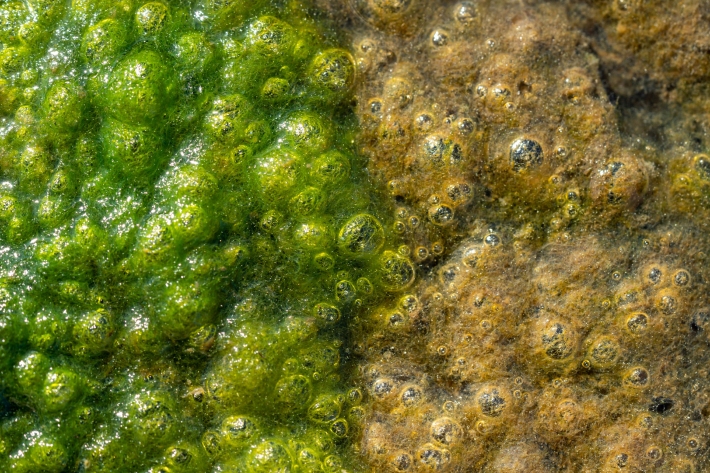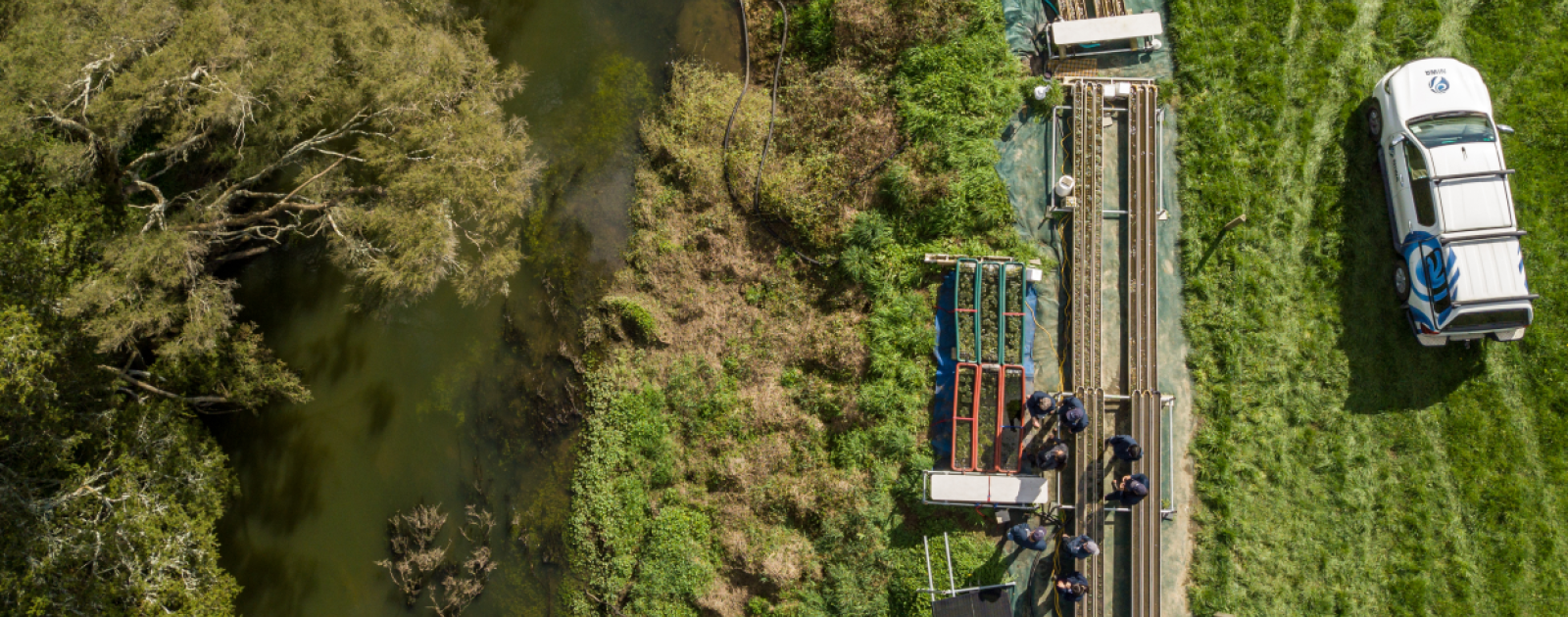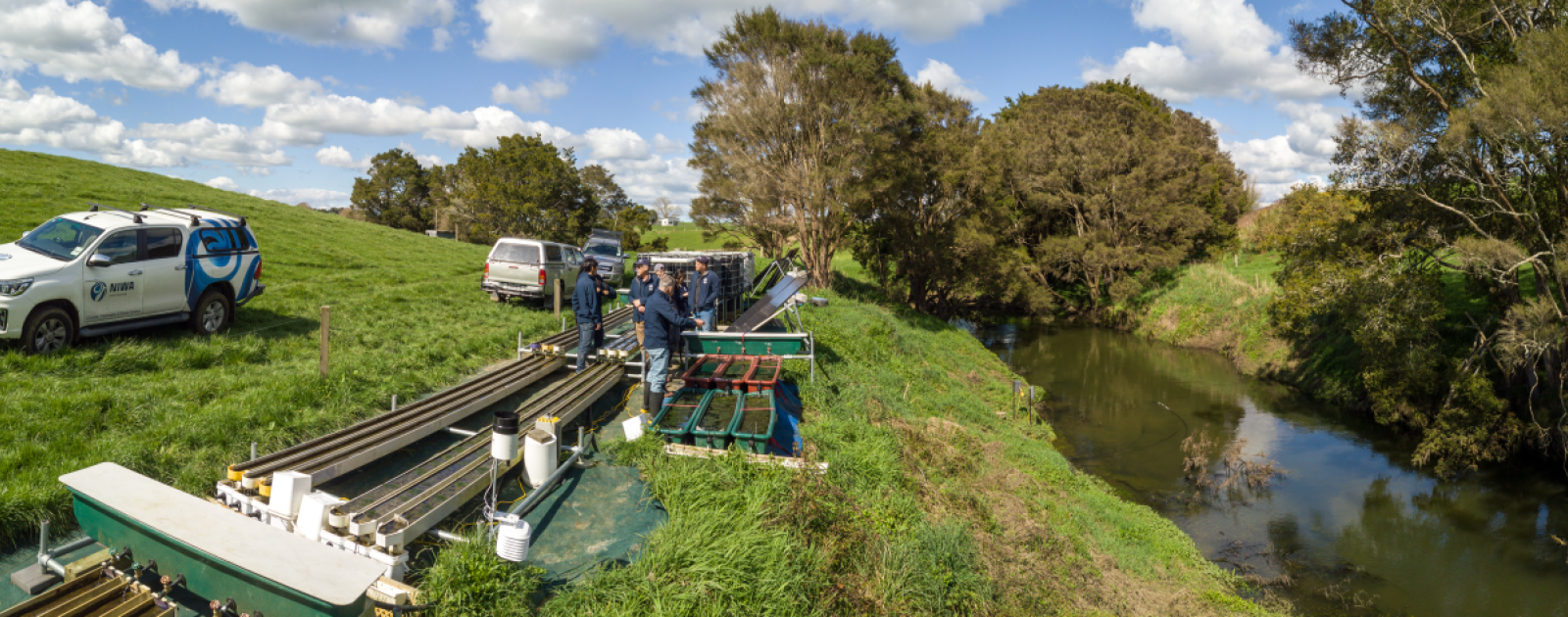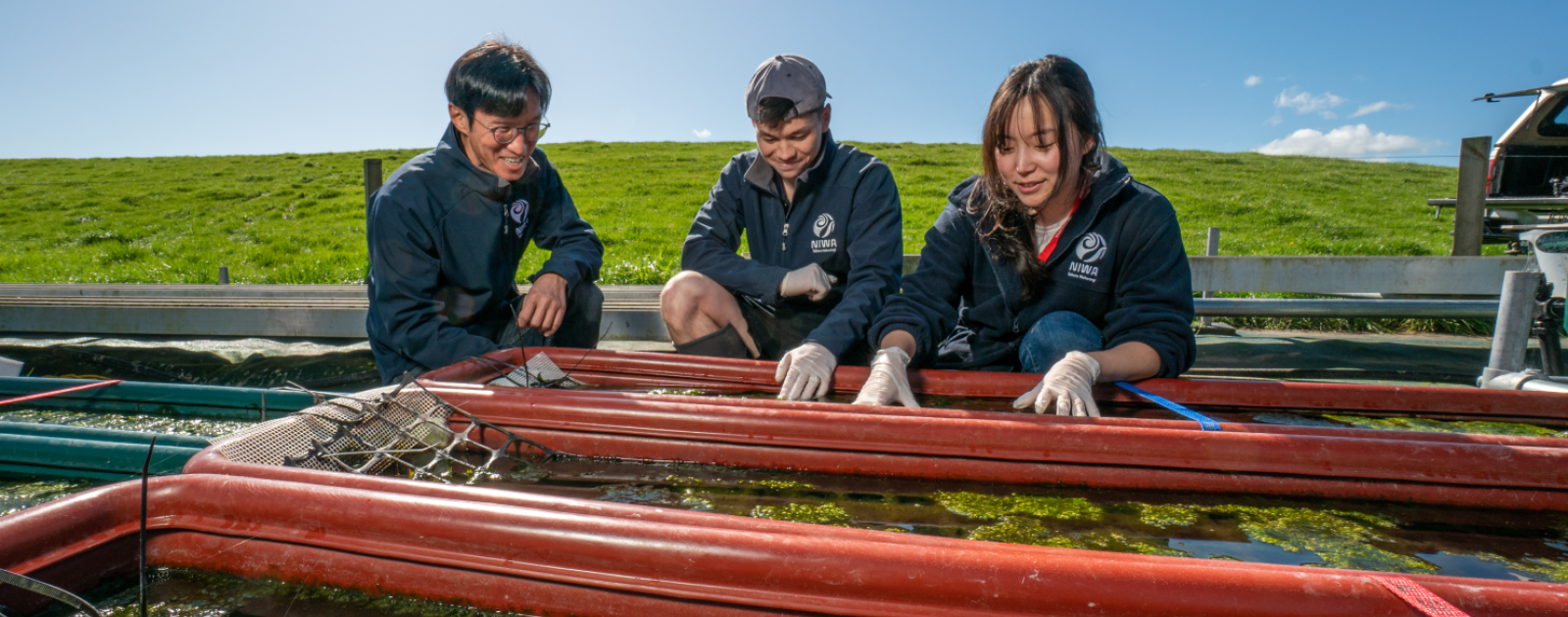FANS systems are gently sloping channels which at full-scale have an area between 250 m2 and several hectares depending on the flow of the drainage ditch, river or lake to be treated. FANS convey the water through dense stands of attached native filamentous algae that are seeded from the water body or others near-by. Native filamentous algae that grow well on FANS include Oedogonium, Rhyzoclonium and Cladophora.
The water is pumped to the inflow end of the channels and treated water runs off the outflow end and is returned to the water body just downstream of the inflow pump to minimise any ecological effects.
Standard FANS are shallow (2-4 cm deep) and the filamentous algae grow off a textured liner and plastic mesh that line the bottom of the floway.
As the water flows down the channel, the algae assimilate dissolved nitrogen and phosphorus and produce algal biomass.
A FANS system can be established in a few weeks and be operational soon after. The algal biomass needs to be harvested periodically to maintain optimal performance and achieve permanent nutrient removal.
The harvested biomass has some value to off-set harvest costs. It can be added to soil as a natural fertiliser and it also can be used as an animal feed supplement for high value compounds e.g. biostimulants and cellulose nano-particles; these and other uses are being explored by the NIWA research team.
Research update
Trial channels were set up at the NIWA Ruakura Algal Research Facility in Hamilton in 2021, and field trials were established using channels set up next to streams on dairy farms in the Waikato in 2022. One farm is owned by Tainui Group Holdings and the other is owned by Paeahu Trust.
Water samples were taken at the inflow and outflow ends of the FANS channels weekly to assess the reduction in nutrient concentrations.
These data were used to determine annual average nutrient removal rates for FANS based on the land area they occupy, and the amount of water flow treated to enable comparison against the nutrient removal performance of other mitigation systems including constructed wetlands, woodchip bioreactors and riparian buffers.
The treatment performance of novel FANS with greater water depths and floating algae attachment mesh has also been compared with that of standard FANS.
Acknowledgements
NIWA’s Aquatic Pollution Group based in Hamilton has led the FANS component of the MBIE Endeavour Programme “Doubling Diffuse Pollution Mitigation” to develop and test FANS systems to treat polluted freshwaters in New Zealand. The project was co-developed with Māori, rural sector, and Government partners.
Case studies
-

Putting algae to work
Publication article25 February 2023Can native freshwater algae help restore the mauri of local waterways? Lawrence Gullery investigates. -

Using algae for nutrient pollution mitigation
Publication article23 January 2023NIWA is working with farming enterprises on a novel pollution mitigation technology to remove nutrients from agricultural runoff.







